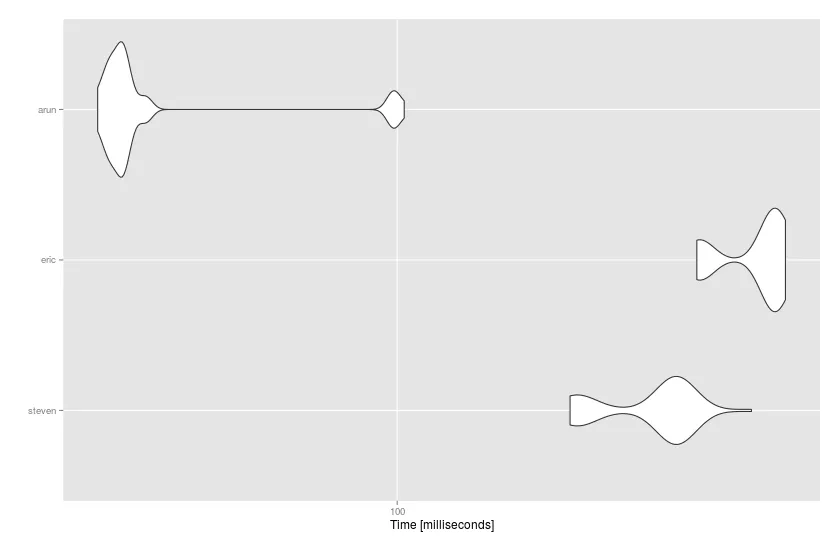我有一个数据框,如下所示:
什么是在dplyr中获取此输出的最可读,最简洁和最有效的方法?对于我尝试使用
> df <- data_frame(g = c('A', 'A', 'B', 'B', 'B', 'C'), x = c(7, 3, 5, 9, 2, 4))
> df
Source: local data frame [6 x 2]
g x
1 A 7
2 A 3
3 B 5
4 B 9
5 B 2
6 C 4
我知道如何为每个组g添加具有最大x值的列:
> df %>% group_by(g) %>% mutate(x_max = max(x))
Source: local data frame [6 x 3]
Groups: g
g x x_max
1 A 7 7
2 A 3 7
3 B 5 9
4 B 9 9
5 B 2 9
6 C 4 4
但是我想要的是对于每个组g,得到最大的x值,排除每行中的x值。
对于给定的示例,期望的输出如下:
Source: local data frame [6 x 3]
Groups: g
g x x_max x_max_exclude
1 A 7 7 3
2 A 3 7 7
3 B 5 9 9
4 B 9 9 5
5 B 2 9 9
6 C 4 4 NA
我曾尝试使用 row_number() 来移除特定元素并取剩余部分的最大值,但是遇到了警告信息,并得到了错误的 -Inf 输出:
> df %>% group_by(g) %>% mutate(x_max = max(x), r = row_number(), x_max_exclude = max(x[-r]))
Source: local data frame [6 x 5]
Groups: g
g x x_max r x_max_exclude
1 A 7 7 1 -Inf
2 A 3 7 2 -Inf
3 B 5 9 1 -Inf
4 B 9 9 2 -Inf
5 B 2 9 3 -Inf
6 C 4 4 1 -Inf
Warning messages:
1: In max(c(4, 9, 2)[-1:3]) :
no non-missing arguments to max; returning -Inf
2: In max(c(4, 9, 2)[-1:3]) :
no non-missing arguments to max; returning -Inf
3: In max(c(4, 9, 2)[-1:3]) :
no non-missing arguments to max; returning -Inf
什么是在dplyr中获取此输出的最可读,最简洁和最有效的方法?对于我尝试使用
row_number()的尝试失败的任何见解也将不胜感激。感谢您的帮助。